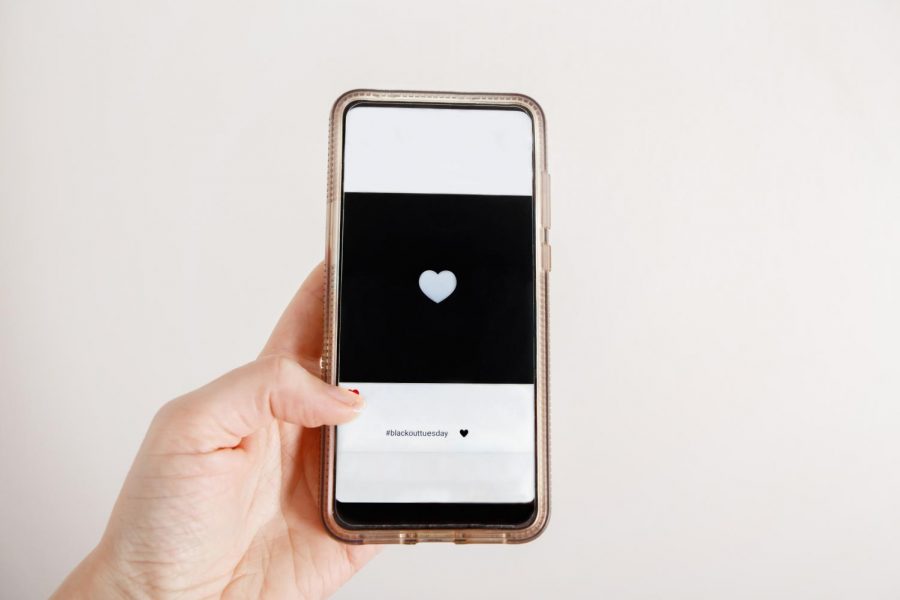Social Media Provides New Platform For Teen Activists
Credit to Photo from Shutterstock
A phone is held up, with a social media application open showing a black screen. “Black-Out Tuesday” was an event over the summer where students posted black squares to show respect for the Black Lives Matter movement.
Published: November 13, 2020
In a world filled with racial injustice, people all over the world are speaking out on their social media. People have committed to sharing links and posts about the racial injustice on their Instagram and Snapchat stories, as well as many more forms of social media. Two of the people actively speaking out for racial justice are junior Mya Walker and sophomore Nila Milo.
“As long as there is injustice and inequity somewhere, there is injustice everywhere,” Walker said.
After the recent deaths of George Floyd, Breonna Taylor and Eric Garner, many people are pushing for racial justice, particularly on social media. While on social media, one can see graphics, shared posts, links and articles all over. This helps the cause of people like Walker and Milo, who work to educate and persuade their followers. When teenagers are active on social media, it allows them easy access to these resources.
“Our generation is so deeply invested and addicted to social media that everything we see everyday is shaping us whether we see it or understand it or not,” Walker said.
Walker has been sharing examples, graphics and other posts since 2017. She mostly uses her Instagram story to share, but is often active on Twitter, Snapchat and Facebook as well. Milo, uses Snapchat to share links to petitions and articles. Milo increasingly began to post after Floyd’s death in May. While Snapchat is her main social account, she often posts these links on TikTok as well.
Social media and the internet are helping spread the word about Black Lives Matter protests and gatherings. These apps are bringing more people to these places to help get racial justice. Social media is keeping people informed about current news events and social causes. It also helps bring in new advocates for the Black Lives Matter movement.
“I feel like now more people can see it which is why more people are on board,” Milo said.
Although there is plenty of true information on social media, there is also an abundance of fake news. Fact-checking information is becoming more necessary to the sharing of articles and information. An important skill to have when being an activist is being able to tell fake news from real news. Ways to do this could be checking sources, understanding why it has been written, and reading multiple articles.
“I just hope other people who share fact-check their stuff, because it makes them look really dumb when you post stuff and it turns out to be fake news,” Milo said.
The main point these activists have for speaking out is simply wanting justice for the wrongs that have been committed. When they speak out together and work for something that they believe in, they’re more likely to achieve their cause and get justice, such as when Floyd’s killers were arrested after the output on social media and the abundance of petitions. Social media has become a deeply influential part of activism for this generation and for generations to come.
“Before the internet it was my word against someone else’s and that was it and it wasn’t powerful enough,” Walker said. “But now we’re able to see it with our own eyes.”







![FHN Holds Prom at Old Hickory Country Club [Photo Gallery]](https://FHNtoday.com/wp-content/uploads/2024/04/Brewer_stopmotion-9-300x200.jpg)
![FHN Boys Varsity Volleyball Team Goes Against Troy [Photo Gallery]](https://FHNtoday.com/wp-content/uploads/2024/03/IMG_7545-300x200.jpg)
![FHN Students Watch the Solar Eclipse [Photo Gallery]](https://FHNtoday.com/wp-content/uploads/2024/04/4.8.24-solar-eclipse_-300x200.jpg)
